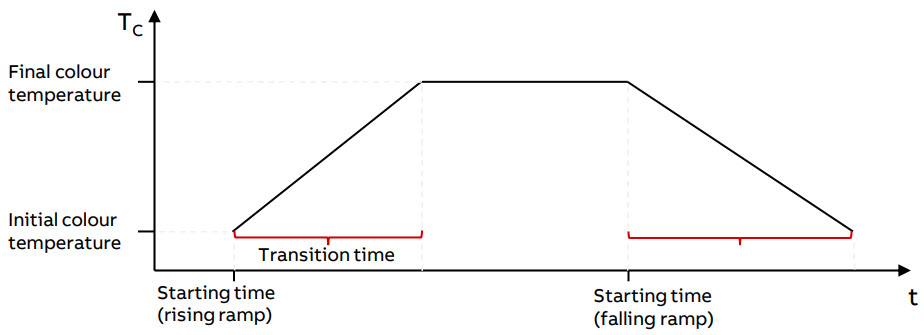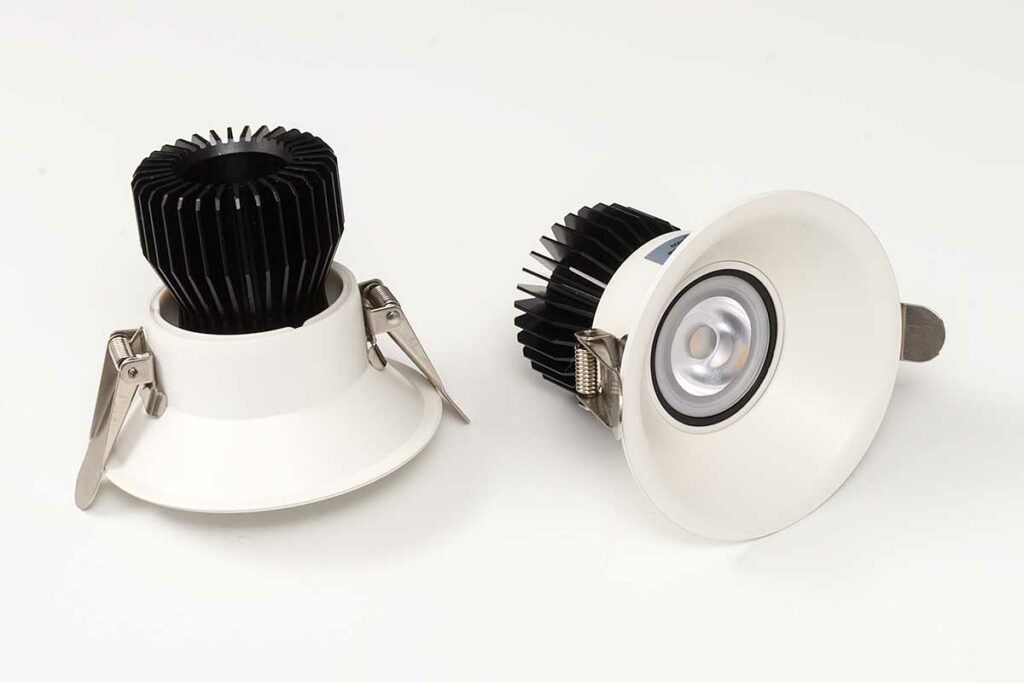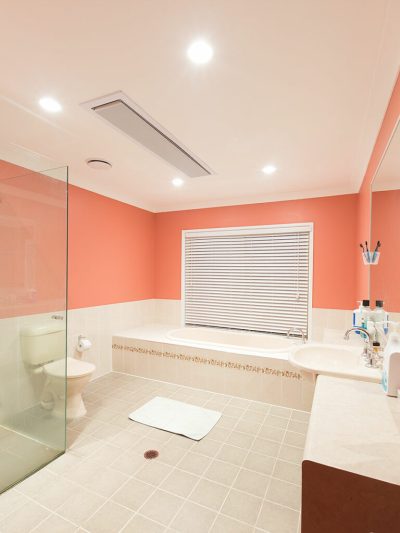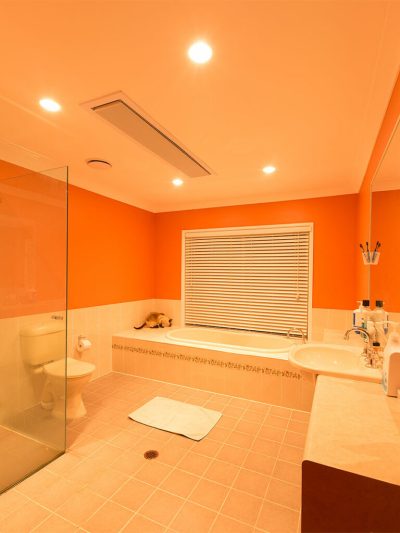I’ve written before about the lousy state of the lighting in the new home we bought last year. Fortunately we moved in during Summer, so the days were long and the need for lighting minimal.
Early in the research phase someone introduced me to the concept of Human Centric Lighting, and I was hooked. That “led” (sorry) to quite a lot of research, and ultimately the only player with a suitable product in the market here in Oz was Brightgreen, and its “D700” family of LEDs.
Human Centric Lighting?
You mightn’t have heard of Human Centric Lighting [HCL] called by that name, but you’ve most likely already encountered an application of it.
HCL is where we adapt lighting to compliment our circadian rhythm, supporting the natural cycle of our body clock.
Our body wakes to the so-called “cold” temperature of bright daylight (with the blue end of the visible light spectrum prominent) and is encouraged to sleep at night by “warmer” light, devoid of the blue and usually more orangey.
If you’ve had an iPhone since iOS 9.3 was released in 2016 you might be using its “Night Shift” feature, which adjusts the display’s colour to a more orange hue after 9pm. On Android it’s called Night Mode.
Flown internationally? (Remember when that was a thing?) In modern aircraft they change the colours of the cabin lighting in an attempt to align your body clock with that of your destination.
Brightgreen implements HCL in their DayShift and NightShift products by using dual LEDs, one at each end of the spectrum, and driving them intelligently to skew the visible light one way or the other.
Our gateway (for want of a better term) between KNX and the Brightgreen lights is an ABB DALI interface, and a couple of timers in our Gira X1 logic controller fire the daily transitions from “day” to “night” mode and back.

Image credit: An ABB Training Presentation.
My timers currently fire three hours before sunrise and one hour before sunset, the links to sunrise and sunset saving me the hassle of worrying about the seasons. In the morning the ‘transition time’ curve shown above is a relatively quick 30 minutes, but in the afternoon and evening it’s a more leisurely two hours.
The end result is that any lights that are turned on always come up at the appropriate colour temperature, and if they’re on during the ‘transition time’ they adapt imperceptibly. (Should I make a habit of getting up HOURS before sunrise, that timer might warrant some tweaking, but for the time being it’s not an issue.)
Here’s what the bathroom looks like at 6am, and bedtime. Whilst it’s stark when you see the two images side-by-side, you don’t notice it at the time, something I absolutely LOVE about it.
(The cats don’t seem to notice either.)
Features
- Consistent dimming – all the LEDs in the room are ALWAYS at the same level, regardless of the dimming value.
- No “wobbling” or oscillations in the light level caused by off-peak lighting control signals in the mains.
- The colour temperature is variable from 2800° to 5800°K.
- A CRI of 97 means your mind’s not being toyed with. The colour spectrum of these lights are as close to naturally-occurring as possible. (This one’s a little hard to quantify, but a high CRI is something you should be looking for in your lights.)
- The gimbal mount lets you easily adjust them from just pointing straight down, allowing some flexibility with highlights and deliberate wall-wash effects, etc. Equally, if you’re retrofitting and the existing mounting holes are too close to the wall, you can angle them away to reduce any undesired highlighting.
- IP44, which means in Oz we can have them in the bathroom.
- IC-4 rated, so you can cover them with insulation.
- Seven year warranty.
Options
- The Day Shift lights come in DALI and Zigbee versions.
- The standard beam angle is 55°, with 20° and 35° models available to special order.
- In black or white bodies.
- Brightgreen also make a range of fascias and filters, allowing you to further tweak the look – and as you’ll see at the bottom of this post, you can even 3D print your own!
Summary
I love these. It delights me no end that the lights seamlessly cycle from cold blue light in the morning to the shade of Donald Trump’s tan at bedtime, and yet I fail to notice it, every single day.
Yes, they’re expensive, but part of that (specifically the DALI component) is a complication I introduced in my requirements. You can enjoy the same HCL experience ~15% cheaper by settling for Zigbee.
Offsetting the price is the seven year warranty.
Brightgreen is clearly confident it’s on a winner because they’ll gladly send you samples to try in place before you commit. That’s extra handy in regional locations like here in Newcastle where there’s no showroom to visit.
Pros
- High CRI.
- The IP and IC ratings mean you can use them anywhere in the home.
- Lots of configuration options, both in beam width and with fascias and filters.
- They share the same physical form-factor with many other Brightgreen lamps, allowing you to mix-and-match as suits your requirements, and you still have a visual consistency.
- A standard 92mm cutout means they’re a drop-in replacement for most legacy halogens and inferior LED lights.
Cons
- OMG the price. With an RRP of $AUD253 (ex-GST) each for the DALI version, you certainly don’t want to be paying full price for these. The Zigbee version is $AUD36 cheaper, and if you just want a fixed colour temperature, those can be had for ~$AUD108).
- They don’t dim low enough. Even at 1% brightness, I thought they were too bright for a candlelight-equivalent intimacy. Once your eyes adjust to the scene, you can read by them.
- I thought the quality control was a little lacking, in contrast with the premium price-tag. Two DALI drivers out of 28 arrived with their LED tails mis-wired, and a couple of the LEDs had their connecting socket at an angle, the plastic locking fingers on the socket not engaged with the body. (Those latter ones were easily corrected with a gentle tug on the socket with a pair of pliers.)
- Having specified a wired control system, that necessitated a KNX <-> DALI interface (circa $AUD1k), although as it’ll drive 64 lamps we have plenty of headroom for future expansion.
The Fine Print
These LEDs were all paid for and installed well before this review. We received a discount off RRP having proposed to submit to a “white paper” for BG’s use, although this has yet to eventuate.
Resources
- The D700+ on the BG website.
- Our ABB KNX DALI driver. I’ll go more into this in a subsequent post.
Credits
I wanted to say a special thanks to Lindsay at Brightgreen who provided fantastic support, pre- and post-sale. Lindsay was able to provide test lights for a proof of concept test, where I needed to be reassured that DALI was a protocol I could trust, having been burnt by it in the past.
Pimp my LEDs
It’s veering off the course a little for a review – hence buried here in the footer – but Rocky found it easy to 3D-print custom diffusers for these. Check out the 3MF here. That opens up potential for all sorts of custom light guides and experimentation.
Revision History
1st February 2023: This is the initial publication.
– G.







